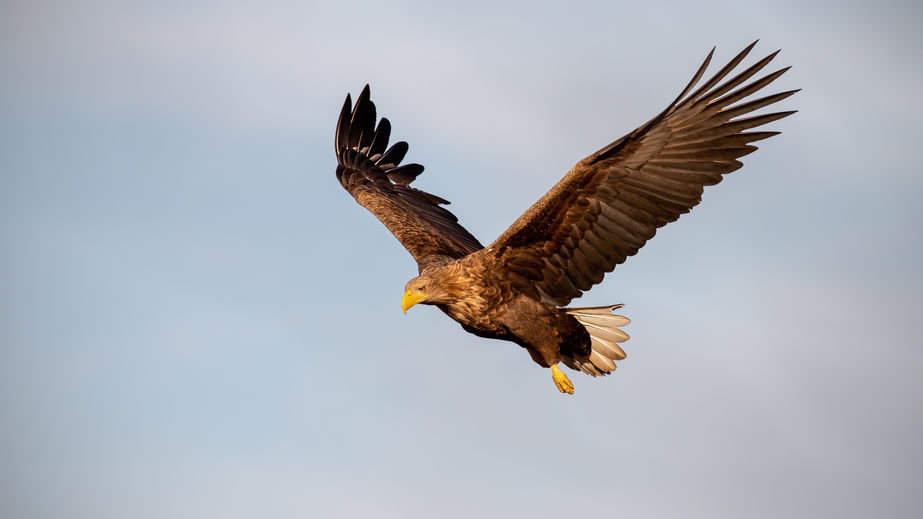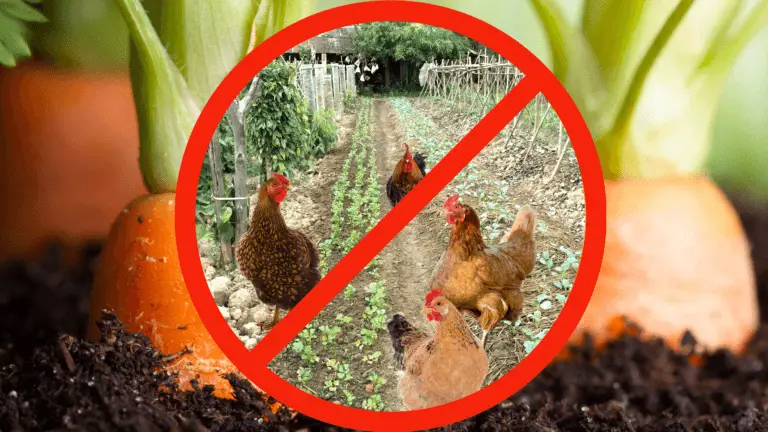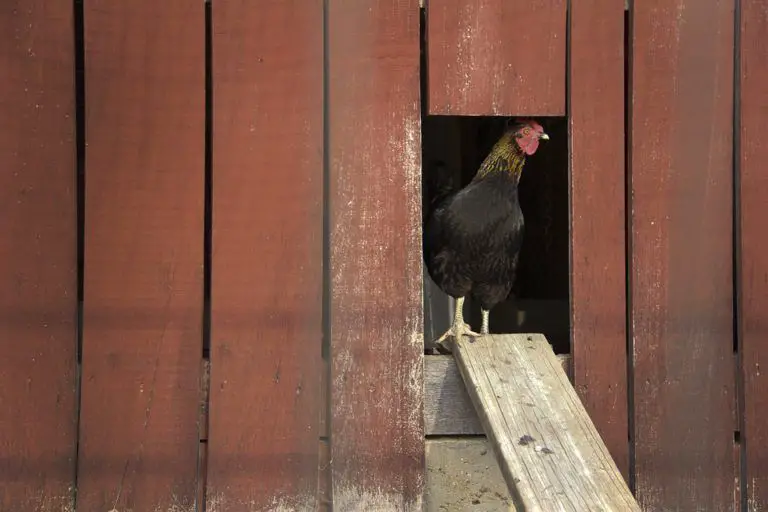15 Common Chicken Predators And How To Keep Them Out Of Your Coop
Protecting your chickens from predators is an ongoing battle. As it turns out, many animals find chickens to be a great meal, and there are many predators that may try to do just that by nabbing your flock right out of the coop.
No matter how well built you think your coop is, those crafty critters can still find a way to get in if they’re intent on having chicken dinner.
So just how do you keep predators out of the chicken coop? In a nutshell: keep your coop elevated (3 ft off the ground is ideal), use quality latches that cannot be opened by racoons, install hardware cloth around the perimeter of the coop and run to prevent an animal from digging in, install wire or plastic mesh netting over the run to keep aerial predators out, seal up any holes or cracks, and install electric mesh netting around the coop.
These methods cover most of the ways to keep your flock safe, but there are more as well, which we’ll cover in more detail later. Below is an outline of what we’ll discuss:
Common Chicken Enemies
Animals and Birds of Prey
How to Identify Predators You Can’t See
How To Predator Proof Your Coop
Effective Predator Deterrents
Predator Prevention Tips
Closing Thoughts
We’ll not only look at 4 legged creatures but aerial predators as well. Thankfully, there are ways to beef up your coop against them all!
For each predator, we’ll discuss what to look for if your chickens have been killed. For example, if a chicken is missing it will more likely be a sign of a fox or coyote. But if you find a chicken without a limb, it could be a raccoon who reached through the chicken wire and tore off a leg.
We apologize in advance for those who may be a bit squeamish about some of the gory details. We only include them to help identify which predator is going after your flock. Ok, let’s get at it!
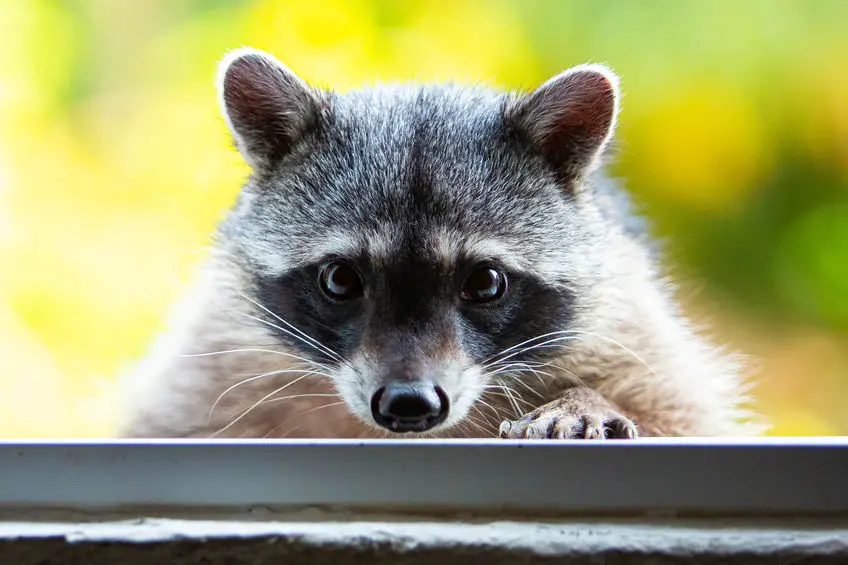
Common Chicken Predators
Raccoon
These are listed at the top for a reason…It’s one of the most common predators for both rural and urban settings! They are cute with their bandit face and all, but can take a chicken out quickly with it’s sharp claws and teeth. They usually attack at night and will (gulp) behead the chicken, leaving the body behind. I’ve read they are primarily after the crop of the chickens.
Coyote
If your chickens are missing from your coop, a coyote may have been the culprit. Unlike other animals, they are after the entire bird, and will take it to an area away from the coop to eat it. Coyotes are more likely to attack at night.
Fox
Fox are crafty animals and are a bit more stealth than other predators. Like coyotes, they take the birds away from the immediate area to eat them elsewhere. You will not likely see a lot of blood either, possibly just a few feathers on the ground. Fox generally attack more at night, but have been known to target free ranging chickens, especially if you live in rural areas.
Mink
Despite their smaller stature, they can be vicious predators. They may not be as prominent a predator as others, but when they come around watch out! In the chicken coop, mink will kill the chickens but not eat them. Entire flocks have been wiped out overnight, so if you see dead chickens (as in several) in or near the coop, you may have mink. They can be hard to spot, but look for small droppings. Because of their smaller size, they can access the coop from small openings.
Weasel
A bit smaller than mink, but closely related, are weasels. They, along with otters, ferrets, martens, and others, are part of the Mustelid class of critters.
Like mink, weasels also kill multiple chickens at once, often by biting the back of the head/neck area (sometimes removing the entire head), and will sometimes pile up the birds to come back for later. If a male weasel has been there, you may notice a pungent odor.
Bear
For the vast majority of us, bear will not be a predator to contend with. But if they are invading your coop, you’ll know!
They are not stealth, and will plow through whatever is in their path to get what they want. They are not as adept at catching chickens, but will likely get a few, and destroy everything in their path as they pursue them. You will need a HEAVY DUTY coop if there are bears in your locale.
Cougar
Averaging between 65 and 150 lbs, cougars are a force to be reckoned with! Not only are they large and powerful, they are also stealth, often attacking at night. They kill chickens quickly, eating many of the vital organs first (heart, lungs, liver), and will bury the rest of the carcass for later consumption. Yikes! Gives me chills just writing about it.
Thankfully, they are not terribly common, except in rural areas. However – as more of their natural territory is being taken over through development, they have been seen in cities occasionally too.
Dog
Our beloved pet dogs can also be a predator if not properly trained. Whether it’s your own dog, or a neighbor’s, they LOVE chicken, and if not kept in check, will kill and eat it on the spot.
Thankfully we have a greater measure of control over dogs than other predators. Once they get the taste of chicken, though, it can be hard to break them of their desire to go after the flock.
Skunk
Obviously smell will give skunks away if they are coming into your coop. They are double trouble in that they like to eat both chickens and eggs! They are more likely to go after younger chickens than the adults. Thankfully, they are not very agile, but have been known to dig their way into a run or coop.
Opossum
Opossums, also called possums, will also eat chickens. They prefer smaller prey like rodents, snails (or trash) but also love chicken. They do not hide their prey and usually eat what they can in one sitting, focusing more on the internal organs and crop of the chicken.
If you suspect possums in your coop, look for chickens that have been attacked in the breast area. Possum droppings look similar to those of household pets. For a more detailed description, see this link at Wildlife Removal USA.
Snakes
Unless it’s a very LARGE snake, it may not try to eat your chickens. But if you have laying hens, they’ll love those eggs! Sealing small holes in the coop is very important for keeping snakes out.
We discuss how to keep snakes out of the coop in this article.
Rats
Yep, even rats will kill chickens if there are many rats and food is scarce. They’ll be more likely to go after chicks and eggs, though. If you see one rat, chances are good you have MANY. I know from personal experience and don’t plan to go down that road again! We discuss how to get rid of rats in the coop in this article.
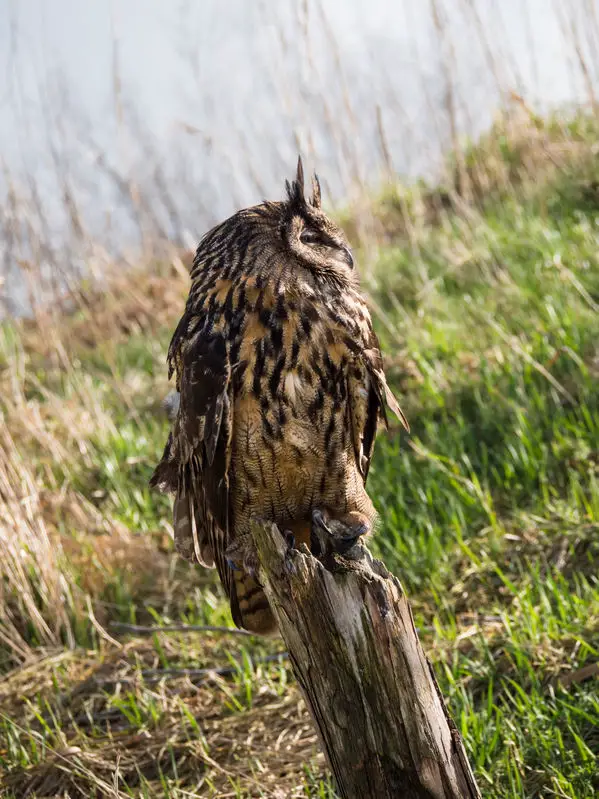
BIRDS OF PREY
Hawks – Large hawks will strike during the daytime and can carry a full sized chicken away. I have seen hawks swoop down for our free range chickens before and have found chickens on the edge of the pasture ripped open from their sharp talons. Hawks can easily snatch chicks and pullets from the yard.
Eagles – Bald eagles primarily eat fish, but have also been seen flying off with chickens if they are readily available and accessible. They kill and eat their prey with their powerful beaks, or snap the spinal cord using their powerful legs.
Owls – Great Horned owls and Barn owls are just two classes of owls known to eat chickens. They are not dainty eaters, and will make a sharp incision to the neck to kill their prey.
*A note on birds of prey. An additional sign to look for is their white feces (very thin, watery consistency), which may be found on nearby fence posts, trees, or on the ground.
How To Know Which Predators Are Lurking Around Your Coop
If you’ve looked at all the signs from above but are still unsure which creature is going after your chickens, there are a few things you can try.
- Install a Camera – Trail cameras or other stationary security cameras can work well. Again, these can cost a bit of added dough upfront, but can pay off once you know what’s trying to get at your flock. They can be purchased here. We write about chicken cameras for the coop in this article.
- Examine the footprints – If you can find a nicely defined footprint, look at this footprint chart to determine what it may be.
- Trapping – Once you have a pretty good idea which animal it is, a live trap can be used to catch it. Once caught, it can then be relocated a LONG way from your home. This can be very effective with raccoons, mink, or other smaller predators.
Predator Proofing Your Coop
Now that we know what predators we’re up against, how do we prevent the carnage of an attack? Let’s examine a few of the most effective stratgies.
Seal Up Holes in Coop
Prevention is key, and oftentimes some of the easiest ways to stop predation. Look for holes or cracks larger than a quarter and seal them up!
Using additional boards, caulking, etc. are quick ways of beefing up your coop so nothing can wiggle their way in. Just know that even a quarter sized hole is enough for a snake, weasel, or rat to enter the coop.
Use Quality Latches
There are predators that can rip through poor quality latches for easy access to your brood. Raccoons even have opposable thumbs, making them more adept at getting past more simple latches.
Avoid basic hook and eye latches and think more along the lines of Carabiners instead as not even coons can get past those! We discuss the importance of latches in our article, Chicken Coop Door Latch: Which Ones To Use And Why.
Hardware Cloth
Chicken wire is great for enclosing a run in areas where predators aren’t common. But if you suspect any of the aforementioned critters in your area, it’s best to get hold of something more structurally solid since chicken wire is a bit flimsy.
Using 1/4 or 1/2 inch hardware cloth is a much better option for enclosing the run or to use as a window in your coop.
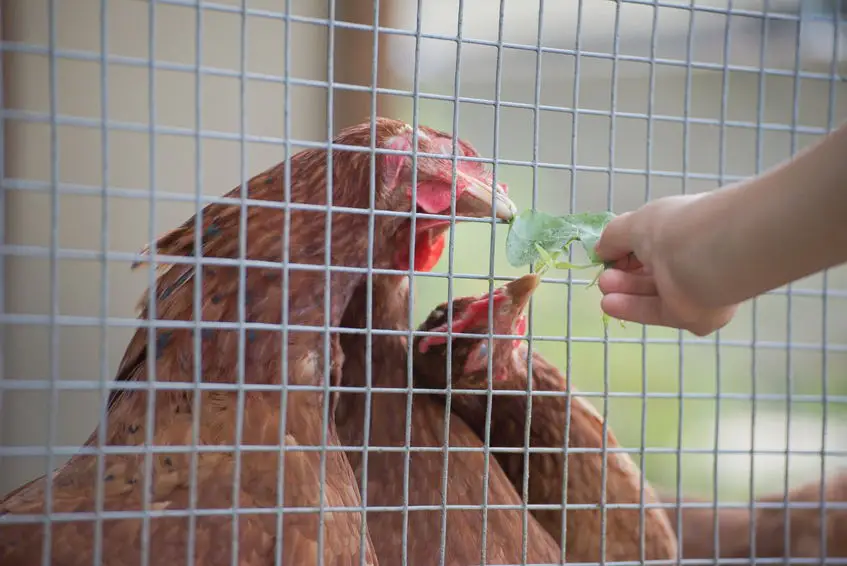
For the run and/or perimeter of your coop, consider burying the mesh at least 12 inches deep around the entire area. I have done this before and it’s A LOT of work. But predators never made it in so it was totally worth the time investment.
A simpler, yet effective alternative is to create a hardware cloth apron around the base of the coop/run area. It’s a swath of hardware cloth (around 3 ft wide) which is folded in a 90 degree angle, and then placed at the base of the run/coop at ground level. The crease is positioned at the point where the coop/run meets the ground, leaving half the swath running up the side of the run/coop and the other half extending away from the run/coop.
It can be buried shallowly and then screwed into the framing of the run or coop. Avoid staples as they can be pulled out if the animal begins digging.
Keep All Doors Shut At Night
This may sound like a no-brainer, but it’s easy to get lackadaisical at times. It’s then that predators may try to strike!
The chicken run door, or “pop door” is the most important to keep shut at night. Although some flock owners don’t mind going to the coop morning and night to open and shut the door, there are ways to make it easier.
An automatic coop door opener can make life much easier and keep your flock safe, but they can be pricey depending on the model. If you have the money for one, though, it’d be a great investment in the safety of your flock.
Also make sure the coop and run doors are shut and secured with a good latch. We write more about automatic pop door openers in this article.
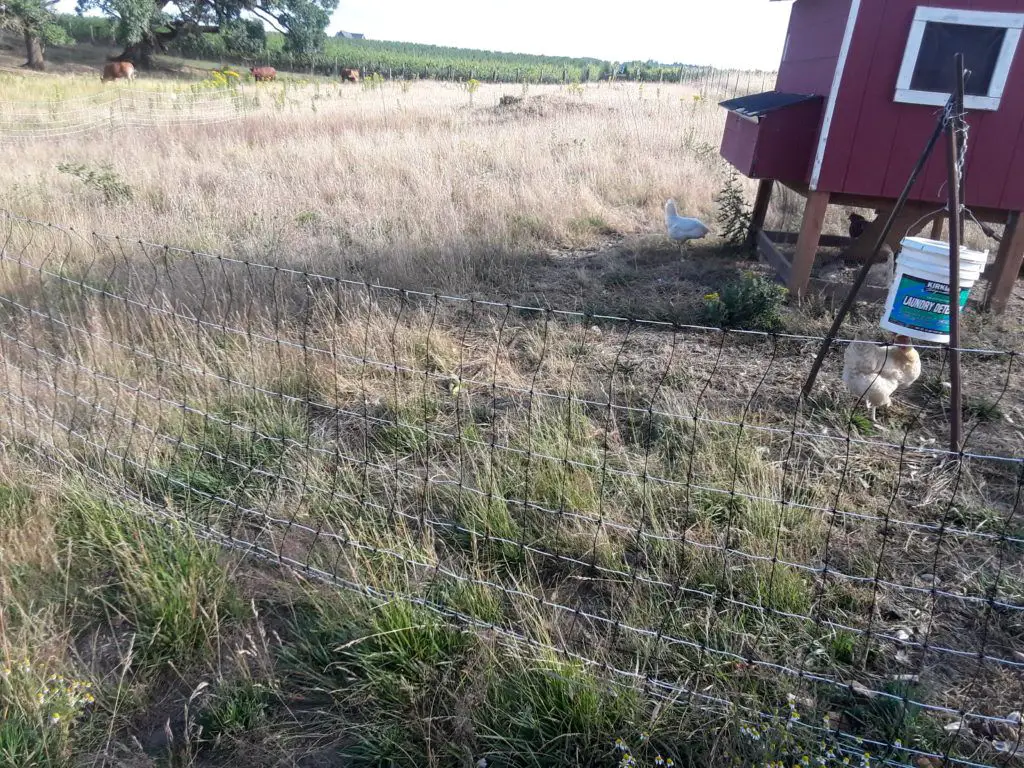
Electric Mesh Netting
This product is great! (can you tell I’m biased). Our chicken coop is in the pasture where we also have cows; And they were always rubbing against the coop, nearly causing it to tip over. So we decided to try this product and have really enjoyed how well it’s worked.
It kept the cows away so chances are it will also keep predators out. Obviously it won’t work against aerial predators, but will stop many of the ground animals.
We bought the netting at our local farm store, but it can also be bought online. If you’d like more information about the netting, read our article.
Bird Netting
For aerial predators, you’ll have to prevent access from above. This is where bird netting comes in. It can be installed on top of your run, allowing your chickens to be outside without getting picked off by a hawk or owl.
Bird netting can be purchased online, at hardware stores, or where bird supplies are sold. I can vouch for its effectiveness first hand, as we’ve used it in our run before.
Predator Deterrents
In addition to beefing up your coop security, there are many way to scare off would-be predators in the first place. Used alongside some of the predator proofing methods discussed, your coop (and flock) should be safe!
Elevate Your Coop
By simply having your coop raised off the ground can make a difference in keeping predators out, especially if you don’t keep the pop door closed at night. Around 3 feet off the ground is ideal. Some animals will still figure how to enter through the pop door by using the ladder, but it can be a deterrent for some.
By itself, this method is more of a deterrent and should be used in tandem with keeping the pop door shut.
Motion Sensor Lights
Motion Sensor Lights can be effective in the short term. Although many predators aren’t too smart, at some point they may realize what’s going on. It’d be wise to use this method paired with one or more other methods since it’s used more as a deterrent.
Get a Rooster
A rooster can be a great protector of the flock, but does not stand a chance against larger predators. However, it can alert the flock to dangers in the area. They have large talons as well, which can frighten off some of the smaller predators.
I would employ a rooster in conjunction with other protective measures.
Guard Animals
Depending on the size of your flock and acreage, guard animals like dogs or llamas can provide excellent protection for your flock!
Dog breeds like the Sheepdog or Great Pyrenees can be trained to live in the pen with your flock. Guard llamas need no training and learn to accept and protect the animals they live with in the pasture. If a coyote tries to steal a chicken the llama will scare it off.
Check out this video of a Llama at work!
Other Scare Tactics and Decoys
- If you have a few old CD’s around collecting dust, they can make great aerial predator deterrents. Just tie a few together with some string or fishing line and hang them outside your coop or in the run. Pinterest has a lot of information on the topic! Here is a pin showing how it can be done.
- The same concept can be done with old pie tins, silver tape, or other shiny objects, strips of cloth, and the like.
- Decoys like fake owls will some predators away, deterring hawks and smaller predators. To maintain its effectiveness, moving the decoy to different areas of the run periodically will help.
- Some chicken enthusiasts have suggested playing music in the coop or run. Depending on the artist, I can see this working to keep people out of the coop but I’m not so sure about animals. I jest, but am just not sure how effective it would be to ward off predators. Perhaps if played loudly enough, it could be an effective strategy in tandem with other methods.
- A mixture of Cayenne pepper and hot sauce can also be a way to ward off a few animals. Sprinkle it around your coop and run area. It will have to be applied on a regular basis to maintain its potency. Just make sure to save some for your scrambled eggs though!
Predator Prevention Ideas
There are a few preventive strategies that can be done to dissuade predators from even wanting to enter your yard in the first place.
- Keep feed spillage to a minimum if possible. Feed spilled on the ground can attract rats and other animals.
- Keep adjacent buildings free of garbage and debris to reduce the chances of animals making a home nearby.
- Monitor wood piles, compost bins, trash cans, etc. making them inaccessible to animals if possible.
Closing Comments
We hope we’ve provided you with all the information you’ll need to keep predators away from your chickens! Though not an exhaustive list, it covers many of the predators to watch out for in the US and Canada.
If there are other predators you’ve encourntered which are not covered here, please comment below and tell us how you dealt with them.
Thanks for stopping by. Happy Chickening!

